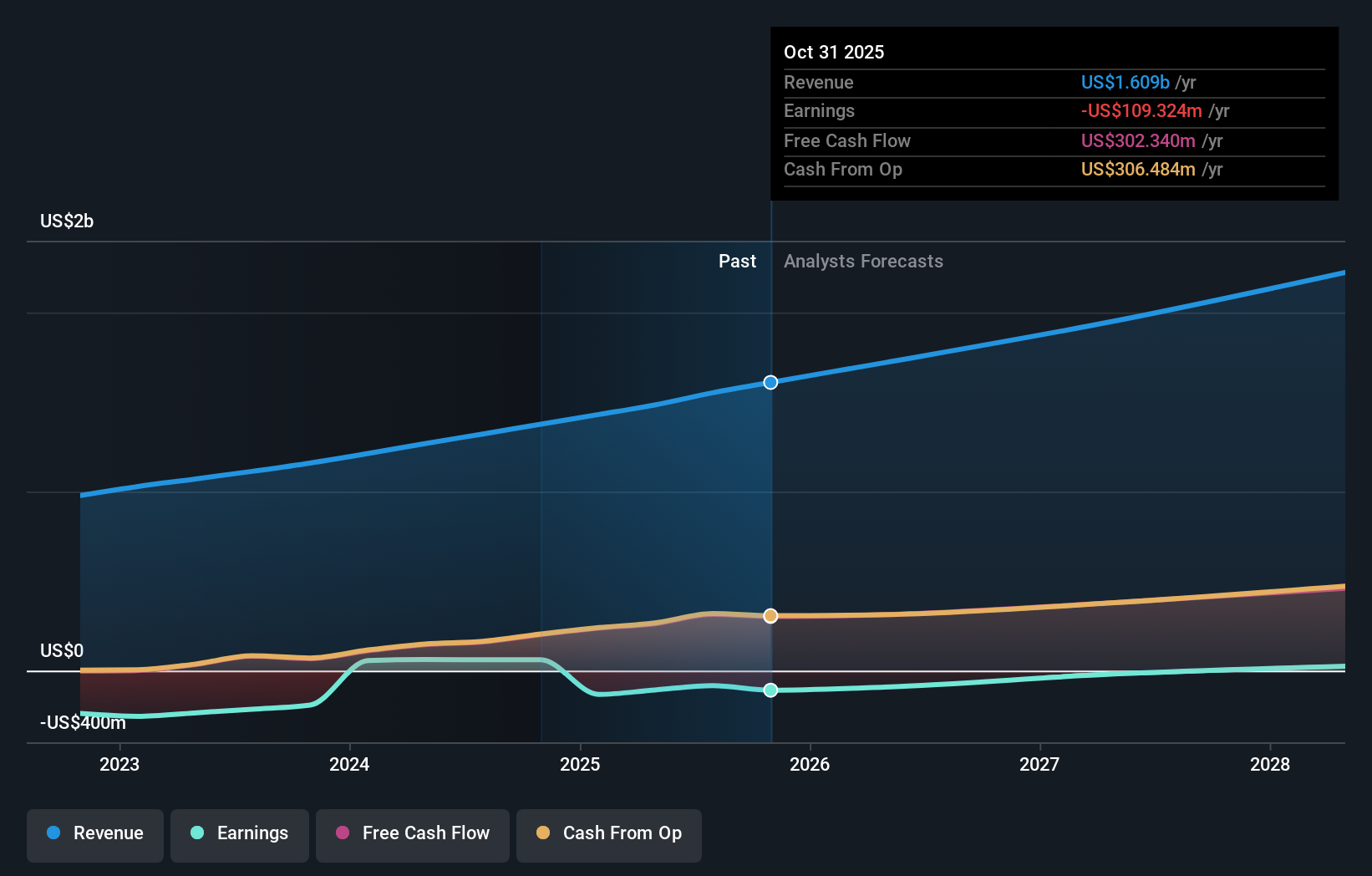- United States
- /
- Software
- /
- NYSE:ESTC
Analysts Have Been Trimming Their Elastic N.V. (NYSE:ESTC) Price Target After Its Latest Report
One of the biggest stories of last week was how Elastic N.V. (NYSE:ESTC) shares plunged 23% in the week since its latest second-quarter results, closing yesterday at US$70.04. It was a pretty bad result overall; while revenues were in line with expectations at US$423m, statutory losses exploded to US$0.48 per share. This is an important time for investors, as they can track a company's performance in its report, look at what experts are forecasting for next year, and see if there has been any change to expectations for the business. We've gathered the most recent statutory forecasts to see whether the analysts have changed their earnings models, following these results.

After the latest results, the 27 analysts covering Elastic are now predicting revenues of US$1.72b in 2026. If met, this would reflect a satisfactory 6.8% improvement in revenue compared to the last 12 months. Per-share losses are predicted to creep up to US$1.11. Before this latest report, the consensus had been expecting revenues of US$1.70b and US$0.62 per share in losses. While this year's revenue estimates held steady, there was also a massive increase in loss per share expectations, suggesting the consensus has a bit of a mixed view on the stock.
Check out our latest analysis for Elastic
With the increase in forecast losses for next year, it's perhaps no surprise to see that the average price target dipped 11% to US$106, with the analysts signalling that growing losses would be a definite concern. There's another way to think about price targets though, and that's to look at the range of price targets put forward by analysts, because a wide range of estimates could suggest a diverse view on possible outcomes for the business. Currently, the most bullish analyst values Elastic at US$150 per share, while the most bearish prices it at US$76.00. Note the wide gap in analyst price targets? This implies to us that there is a fairly broad range of possible scenarios for the underlying business.
One way to get more context on these forecasts is to look at how they compare to both past performance, and how other companies in the same industry are performing. We would highlight that Elastic's revenue growth is expected to slow, with the forecast 14% annualised growth rate until the end of 2026 being well below the historical 20% p.a. growth over the last five years. Juxtapose this against the other companies in the industry with analyst coverage, which are forecast to grow their revenues (in aggregate) 15% annually. So it's pretty clear that, while Elastic's revenue growth is expected to slow, it's expected to grow roughly in line with the industry.
The Bottom Line
The most important thing to take away is that the analysts increased their loss per share estimates for next year. Happily, there were no real changes to revenue forecasts, with the business still expected to grow in line with the overall industry. The consensus price target fell measurably, with the analysts seemingly not reassured by the latest results, leading to a lower estimate of Elastic's future valuation.
With that said, the long-term trajectory of the company's earnings is a lot more important than next year. We have forecasts for Elastic going out to 2028, and you can see them free on our platform here.
Even so, be aware that Elastic is showing 1 warning sign in our investment analysis , you should know about...
Valuation is complex, but we're here to simplify it.
Discover if Elastic might be undervalued or overvalued with our detailed analysis, featuring fair value estimates, potential risks, dividends, insider trades, and its financial condition.
Access Free AnalysisHave feedback on this article? Concerned about the content? Get in touch with us directly. Alternatively, email editorial-team (at) simplywallst.com.
This article by Simply Wall St is general in nature. We provide commentary based on historical data and analyst forecasts only using an unbiased methodology and our articles are not intended to be financial advice. It does not constitute a recommendation to buy or sell any stock, and does not take account of your objectives, or your financial situation. We aim to bring you long-term focused analysis driven by fundamental data. Note that our analysis may not factor in the latest price-sensitive company announcements or qualitative material. Simply Wall St has no position in any stocks mentioned.
About NYSE:ESTC
Elastic
A search artificial intelligence (AI) company, provides software platforms to run in hybrid, public or private clouds, and multi-cloud environments in the United States and internationally.
High growth potential with excellent balance sheet.
Similar Companies
Market Insights
Community Narratives



